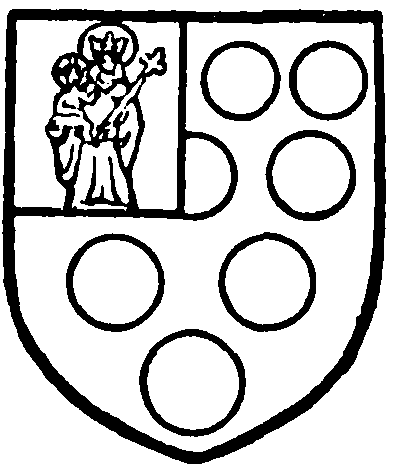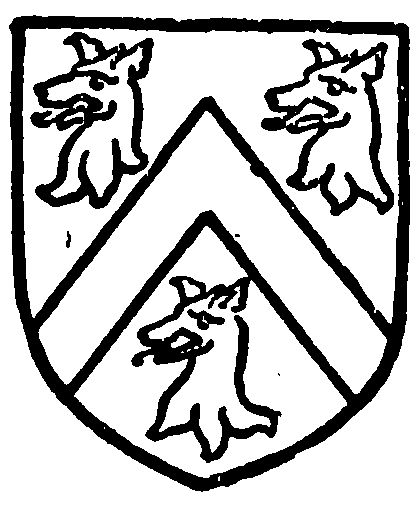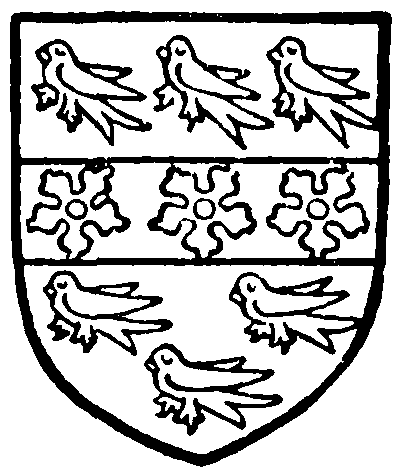A History of the County of Worcester: Volume 4. Originally published by Victoria County History, London, 1924.
This free content was digitised by double rekeying. All rights reserved.
'Parishes: Doddenham', in A History of the County of Worcester: Volume 4, ed. William Page, J W Willis-Bund (London, 1924), British History Online https://www.british-history.ac.uk/vch/worcs/vol4/pp260-262 [accessed 30 April 2025].
'Parishes: Doddenham', in A History of the County of Worcester: Volume 4. Edited by William Page, J W Willis-Bund (London, 1924), British History Online, accessed April 30, 2025, https://www.british-history.ac.uk/vch/worcs/vol4/pp260-262.
"Parishes: Doddenham". A History of the County of Worcester: Volume 4. Ed. William Page, J W Willis-Bund (London, 1924), British History Online. Web. 30 April 2025. https://www.british-history.ac.uk/vch/worcs/vol4/pp260-262.
In this section
DODDENHAM
Dodeham (xi cent.); Dudeham, Doddeham (xiii cent.); Dodnam, Douddenham (xvi cent.).
This parish lies on the Herefordshire boundary of the county, on the road from Bromyard to Worcester. It is bounded on the west and south by the River Teme. The ground is undulating and picturesque, the greatest heights, about 400 ft., being reached at Ankerdine Hill and at Hagborough Farm in the north-west; the land on the banks of the Teme is liable to floods. The village is a mile north-east of Knightwick station on the Worcester and Bromyard branch of the Great Western railway. A road to Martley runs north through the parish from the Bromyard and Worcester road, the latter entering the parish at Knightsford Bridge, a lattice-girder structure crossing the Teme in two spans and connecting Doddenham with Knightwick. Near this bridge is St. Mary's Church, built in 1856 to replace the old church of St. Andrew, now entirely removed, and described by Lewis, (fn. 1) writing in 1849, as very small and in bad repair, and by Noake (fn. 2) in 1868 as a 'rude structure.' The side of the older church is in the village of Doddenham, to the west of Doddenham Hall, on the north side of the Worcester and Bromyard road, a little over a mile to the east of Knightsford Bridge.
Doddenham Hall is a brick structure of little interest, and the cottages here are few and scattered, the main settlement being at Knightsford Bridge. Some half-timber work, much altered and modernized, remains here, the most interesting example of which is the Talbot Inn, a late 16th-century building two stories in height with an attic, refronted with brick in the 18th century. An original chimney stack, with brick shafts of the intersecting diagonal plan, still survives.
Ankerdine 'lieth a mile west, and a little by north from Dodenham chapel; it is the furthermost limits of the parish and of Worcestershire,' (fn. 3) and Ankerdine Hill commands very beautiful views. On the side of the hill looking down the Teme valley is the County Tuberculosis Sanatorium.
Habington wrote: 'Doddenham hath throughout the village a fowle combersom stony waye leavinge on the one syde grounds as bad as any, and on the other pastures comparinge with the best of the realme.' (fn. 4) The soil is various, some of it being stiff loam and some marl and clay; the subsoil is Keuper Marl. The parish has an area of 898 acres of land and 10 acres covered by water, rather less than twothirds being permanent grass, while, of the remainder, the acreage of arable is about double that of woods and plantations. (fn. 5) The chief crops grown are fruit, hops and cereals.
Almshouses were erected here in 1890 by Mr. John Francis Greswolde-Williams and endowed for six persons.
Among place-names have been found Smelham, Lefdiacre, Heselfurlong, Culverfurlong, (fn. 6) Wiggebiesbroc, (fn. 7) Brockherdham, (fn. 8) Wyteburnehalle, Bernesfurlong, Wonderfurlong (fn. 9) (xiii cent.); Wickfeild, Veney Hill (fn. 10) (xvii cent.).
MANORS
At the date of the Domesday Survey Gilbert Fitz Turold held DODDENHAM, which had been previously held by Celmar. (fn. 11) Doddenham passed in the same way as Hanley William (q.v.) to the Earls of Gloucester and was held in 1210–12 of the honour of Gloucester. (fn. 12) It was included among the knights' fees belonging to the earldom as late as 1296. (fn. 13)
Thomas Delamare in 1210–12 and William Delamare a little later held Doddenham apparently as mesne lords between the Earls of Gloucester and the Mans family. (fn. 14) The heirs of William Delamare were said to be holding this mesne lordship in 1296. (fn. 15)
Simon de Mans, lord of Doddenham, granted land there to the priory of Worcester (fn. 16) towards the end of the 12th century. (fn. 17) Simon was succeeded by a son Walter, whose son William granted lands to the priory in 1231 and confirmed the grants of Simon his grandfather and William his uncle. (fn. 18) The estate thus acquired by the priory seems afterwards to have been the principal manor of Doddenham, and the prior was returned about this time as holding half a fee in Doddenham. (fn. 19) The priory remained in possession of this manor until the Dissolution, (fn. 20) when it was granted to the Dean and Chapter of Worcester, (fn. 21) to whom it was confirmed in 1608–9. (fn. 22) It was sold by the Parliamentary trustees in 1649 to Henry Pitt of London, (fn. 23) but was restored to the dean and chapter at the Restoration (fn. 24) and confirmed to them in 1692. (fn. 25) With most of the rest of the dean and chapter's estates it was taken over in 1859 by the Ecclesiastical Commissioners, (fn. 26) who are now lords of the manor.

Priory of Worcester. The arms of the bishopric with the difference of a quarter azure charged with the figures of Our Lady with the Child or.
The part of the manor retained by the Mans family passed on the death of William de Mans about the middle of the 13th century to his sisters, Avice wife of Bartholomew Marshal, and — — wife of Walter Mapnor. (fn. 27) The Marshals seem to have been seated at Martley, William Marshal of Martley being witness to a deed of William de Mans. (fn. 28) In another undated charter William Marshal of Holyene is mentioned. (fn. 29) The descent of the Marshals' estates is obscure, (fn. 30) but they seem to have passed before 1431 to John Staple, described as of Martley. (fn. 31) Walter Staple appears to have been holding land in Doddenham in 1460, (fn. 32) but had died before 1486, when the marriage of his daughter and heir Eleanor was the subject of a suit brought by the Prior of Worcester against John Washbourne of Wichenford and John Holand of Mathon. They had carried off the heir against the will of the prior, who claimed that Walter owed him homage, fealty and scutage for land held of his manor of Ankerdine. The defence was that it was held of the Prior of Great Malvern as of that prior's manor of Doddenham, but the Prior of Worcester recovered damages. (fn. 33) Eleanor married John Washbourne's son Robert, (fn. 34) and in 1512 the manor of Doddenham was held by her second husband, Arnold Gower, (fn. 35) in her right. In 1537 Arnold Gower and Eleanor granted the reversion of the manor after their deaths to John Gower of London for payment of certain sums to Eleanor's younger children and grandchildren. (fn. 36) Eleanor died in April 1542 (fn. 37) and Arnold Gower on 20 January 1543. (fn. 38) John Gower had the custody of the manor granted to him in November following, (fn. 39) and in 1546 conveyed it to Eleanor's grandson and heir, Anthony Washbourne. (fn. 40) The manor then descended with Wichenford (fn. 41) until 1631, when John Washbourne of Wichenford settled his property in Doddenham on Thomas, his son by his second wife Eleanor. (fn. 42) In 1658 Thomas seems to have sold part of this property to Rowland Berkeley. (fn. 43) The rest probably came to his eldest son Samuel, who in 1690–1 sold land there to Edward Underhill and in 1696–7 to Dr. William Johnson. (fn. 44)

Gower. Azure a cheveron between three wolve's heads razed or.

Washbourne. Argent a fesse between six martlets gules with three cinqfoils argent on the fesse.
The part of Doddenham which passed to Walter Mapnor may have descended with Knightwick (fn. 45) and have been given with it by Walter or Lucy Mapnor to the priory of Great Malvern. (fn. 46) The prior was in possession of a manor of Doddenham in 1486 of which the Staples' estate was said to be held, (fn. 47) and at the Dissolution the priory had rents of assize at Doddenham. (fn. 48) The rents and services of one Staple and Richard Tellam at Doddenham were granted as a late possession of Great Malvern Priory in 1544 to Thomas Sheldon. (fn. 49) This property probably afterwards passed to John Hall, of whom the Washbournes' manor was said in 1570 to be held. (fn. 50) This was probably the estate afterwards held with Knightwick by the Clents. Simon Clent died seised of it on 4 January 1598, when he was succeeded by his nephew John Clent, son of his eldest brother William, who had livery of it on 12 July 1617. (fn. 51)
The manor of ANKERDINE (Queredham, Ancredham, xiii cent.) was probably included in 1086 in the manor of Doddenham. Ankerdine was included among the knights' fees held of the earldom of Gloucester in 1296. (fn. 52)
A family named Ankerdine (Ancredham) held land, and possibly a manor, here in the 13th century. The priory of Worcester exchanged lands at Doddenham with Adam, lord of Ankerdine, giving him lands near his house at Ankerdine which had been granted to the monks by their benefactors the Mans. (fn. 53) Adam de Ankerdine granted to the priory other lands, (fn. 54) and witnessed deeds, undated. (fn. 55) Robert son of Martin de Ankerdine gave to the priory lands and rent, (fn. 56) as did Gilbert son of Walter de Ankerdine, these grants being confirmed by William son of Walter de Mans. (fn. 57) John de Ankerdine granted land to the priory in 1276–7. (fn. 58) Margery de Ankerdine contributed to the subsidy about 1280. (fn. 59) Walter de Ankerdine is mentioned as a juror in 1304 (fn. 60) and 1308, (fn. 61) and in 1317 granted a messuage, land and rent in Doddenham and Ankerdine to the priory of Worcester in free alms. (fn. 62) Habington writes that this 'was the last of Ancerdham's manors in Doddenham,' because in 1393–4 the priory of Worcester leased the manor of Doddenham and Ankerdine. (fn. 63) The monks of Worcester seem to have henceforth held the two manors, which were sometimes regarded as one. (fn. 64)
The mill of Doddenham was entered in the Domesday Survey as worth 12s. (fn. 65) It was granted in 1221 by William de Mans to John son of Adam. (fn. 66) In 1231 it was acquired by the Prior of Worcester, (fn. 67) who leased it in 1235 to Henry Drugel for a rent of 37s. 2d. (fn. 68) The priory accounts for 1350 contain an entry of 16s. a year from the mill. (fn. 69)
CHURCH
The church of ST. MARY, erected in 1856 at Knightsford Bridge, consists of a chancel, north vestry, nave, north porch, and a western bellcote. The design is in the 'early decorated' style, and the walls are of polygonal sandstone rubble with wrought stone dressings, the roofs being covered with tiles. The fittings are all modern, with the exception of the plain circular tut font, which is of the 12th century. In the porch is preserved a mediaeval iron-bound chest of elm with three locks.
The plate in use includes the old plate of Knightwick, under which parish it has been described.
The registers before 1812 are as follows: (i) all entries 1538 to 1695, with a break between 1646 and 1674, and only fragmentary entries from 1681 to 1695; (ii) baptisms 1695 to 1779, marriages 1698 to 1751; (iii) marriages 1760 to 1809. From 1781 the entries of baptisms and burials are kept with the Knightwick registers.
ADVOWSON
The descent of the advowson of Doddenham has always been the same as that of Knightwick, (fn. 70) the livings having been united from early times. (fn. 71)
In 1535 Martley Church received an annual pension of 2s. 4d. from Doddenham chapel. (fn. 72) In Habington's day Doddenham and Knightwick had no right of burial, but buried at Martley. (fn. 73)
Messuages for maintaining lights in Doddenham Church were granted to William Dalby in 1560. (fn. 74)
CHARITIES
Elizabeth Richards— as stated on the church table—gave £20 for the poor. A sum of £20 6s. 1d. consols, producing 10s. a year, is held by the official trustees in respect of this charity.
The other gifts mentioned in the same table appear to have been expended.
A sum of £2 10s. a year payable out of property known as Gaines Estate in Whitbourne, co. Hereford, is also distributed among the poor under the title of John Freeman's charity, together with a sum of £1 5s. in respect of the poor's land.
For the charities of John Francis GreswoldeWilliams see under the parish of Knightwick. (fn. 75)